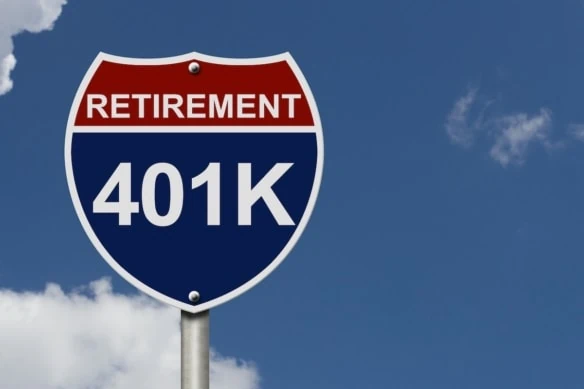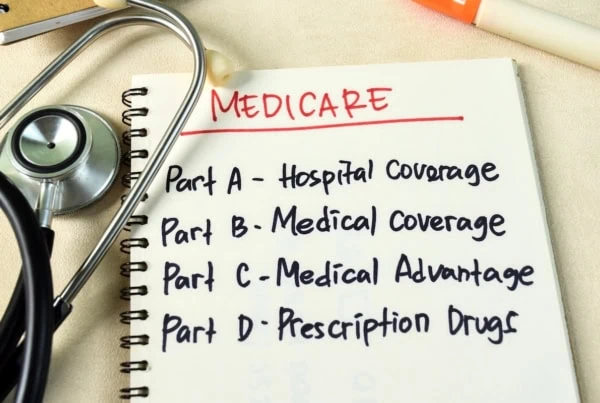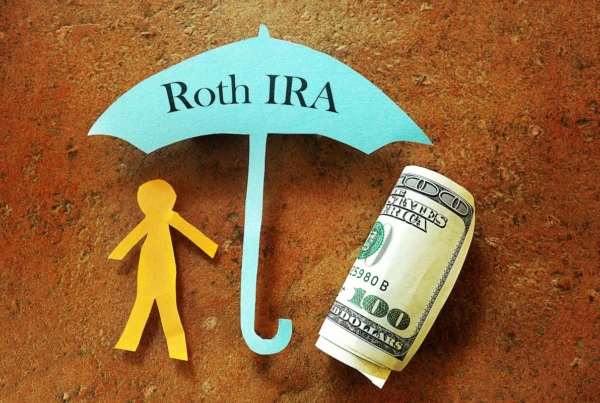For certain types of retirement savings accounts, you don’t pay income tax on funds in the account until you withdraw money from the account. That’s a great tax benefit, but sooner or later Uncle Sam wants you to pay taxes on your retirement savings … and that’s where required minimum distributions (RMDs) come in. By forcing you to withdraw a certain amount from your retirement funds each year, RMDs turn previously un-taxed retirement savings into taxable income.
However, seniors who saved a lot of money for their golden years usually don’t want to pull money out of their retirement savings accounts if they don’t have to. They want to keep as much money in those accounts for as long as possible so their money can continue to grow on a tax-free or tax-deferred basis. That’s why RMDs aren’t popular with retirees.
Fortunately, there’s some good news to report: RMDs are no longer required for one popular type of retirement account. For some seniors, that means no more RMDs. Period.
But there’s some bad news, too: For most seniors, RMDs from other retirement accounts will still be necessary.
So, where do you stand when it comes to RMDs from your retirement savings accounts? Read on to find out. I’ll also bring you up to speed on some RMD basics so you don’t get in trouble with the Internal Revenue Service.
Managing your money in retirement can be tricky … but the more you know, the easier it gets.
Related: 11 Ways to Avoid Taxes on Social Security Benefits
Table of Contents
The Good News: No More RMDs for Roth 401(k) Accounts

Starting this year, you don’t have to take an RMD from any Roth 401(k) accounts you own.
This actually makes perfect sense, since contributions to a Roth 401(k) account are made with “after-tax” dollars. In other words, money taken out of your paycheck and put in a Roth 401(k) account is included in your taxable income, so it’s taxed in the year the contribution is made. However, you don’t have to pay any tax on the money you withdraw from the account in retirement (because you already paid tax on it). This tax-free growth is actually the main benefit of a Roth 401(k) account.
So, if you’ve already paid tax on the money you put into a Roth 401(k), then there’s no reason for RMDs from the account. Right? After all, the goal of RMDs is to get a retirement account holder to pay tax on funds that haven’t been taxed yet. But if you’ve already paid tax on contributions to a Roth 401(k), and withdrawals from the account in retirement aren’t taxable, the federal government doesn’t really gain anything by requiring RMDs from the account.
Related: Should You Max Out Your 401(k) Each Year?
The Bad News: RMDs Still Apply to Many Other Retirement Accounts
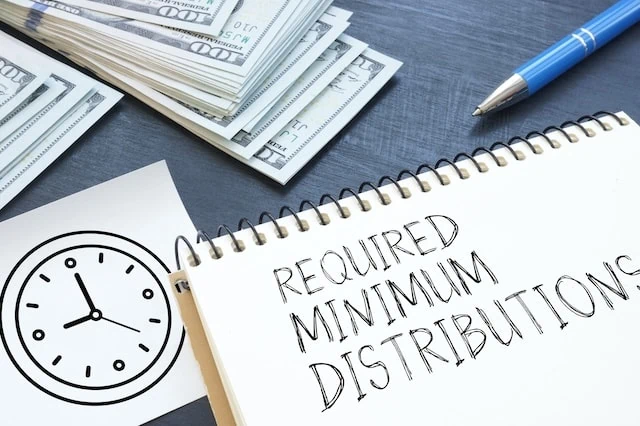
Even if you’re no longer required to take RMDs from any Roth 401(k) accounts, there’s a good chance you’ll still have to take RMDs from one or more other tax-deferred retirement accounts. That’s because the required minimum distribution rules still apply to:
- Traditional IRAs
- SEP IRAs
- SIMPLE IRAs
- 401(k) plans
- 403(b) plans
- 457(b) plans
- Profit sharing plans
- Other defined contribution plans
- Inherited Roth IRAs
That’s because income tax isn’t paid on funds in these accounts until they’re distributed to the account owner. So, the federal government still has an incentive to force withdrawals from these accounts so you have to pay taxes on the distribution.
Note that Roth IRAs aren’t on the list. Like Roth 401(k) accounts, they’re funded with after-tax contributions and withdrawals in retirement aren’t taxed. So, again, there’s no reason to apply the RMD rules to Roth accounts, whether it’s a Roth 401(k) or a Roth IRA.
Related: IRA vs. 401(k): How These Retirement Accounts Differ
When Do RMDs Start?

If you have retirement savings in something other than a Roth 401(k) plan or Roth IRA, you need to be familiar with the basic RMD rules.
Let’s start with the age at which you need to start taking RMDs, which has changed frequently over the past few years … and is scheduled to change again down the road.
Before 2020, RMDs were required once you turned 70½ years old. However, that threshold was raised to 72 starting in 2020, and then bumped up again to 73 starting in 2023. So, for example, if you turn 73 or older this year, you need to take an RMD for 2024.
And there’s more good news if you’re still in your 60s or younger: Starting in 2033, you won’t have to worry about RMDs until you turn 75.
YATI Tip: Even if you’re 73 or older, you don’t have to take RMDs from a 401(k) account as long as you’re still working for the employer sponsoring that 401(k) plan and you don’t own at least 5% of the company.
Related: How to Start a Retirement Plan and Build Retirement Savings
What’s the Deadline for Taking an RMD?

What’s the deadline for taking an RMD if you’ve reached the magic age? You generally must take your RMD by the end of the year for which it’s required (e.g., by Dec. 31, 2024, for your 2024 RMD).
However, you have until April 1 of the following year to take your first RMD. So, for example, if you turn 73 in 2024, you have until April 1, 2025, to take your RMD for the 2024 tax year. (Your RMDs for 2025 and thereafter will be due at the end of each year.)
If you postponed RMDs from a 401(k) account because you were still working for the company that sponsored the 401(k) plan (as noted earlier), you’ll have until April 1 of the year following the year you leave that job to start taking RMDs from that account.
YATI Tip: Be careful if you wait until April 1 of the following year to take your first RMD, because you’ll have to take two RMDs that year. That extra income could put you in a higher tax bracket or make more of your Social Security benefits taxable.
Related: States That Tax Social Security Benefits
How Do You Calculate Your RMD?

Once you know if and when you need to take an RMD, you still need to calculate the proper amount to withdraw from your retirement account.
The required amount is based on two factors:
- How much you have in the account at the end of the previous year
- A distribution period for your age that’s based on your life expectancy
The distribution period is found in Appendix B of IRS Publication 590-B. Use the publication issued for 2023 returns to calculate 2024 RMDs (although that version hasn’t been released yet).
In most cases, use Table III to find the distribution period if you’re taking an RMD while you’re still alive. However, use Table II if your spouse is the sole beneficiary of your account and he or she is more than 10 years younger than you. Table I is used if you inherit a retirement account from someone other than your spouse.
Your retirement account custodian or administrator might calculate the RMD amount for you. However, it’s your responsibility to calculate and withdraw the proper amount if that doesn’t happen.
Also remember that the “M” in RMD stands for “minimum.” So, you can withdraw more than the applicable RMD amount if you want. However, if you withdraw more than you have to, the extra amount can’t be credited toward next year’s RMD.
You also can’t roll over an RMD into another retirement account.
YATI Tip: If you have more than one traditional IRA, you must calculate the RMD separately for each account. However, you can withdraw the combined total amount of RMDs from just one account or a mixture of IRAs as you see fit. If you have multiple traditional 401(k) accounts, RMDs must be calculated and taken from each separate account.
Related: How to Roll Over 401(k) Accounts
What If You Don’t Take an RMD (Or Take Less Than the Required Amount)?

The IRS will hit you with a 25% penalty on retirement account withdrawals that are less than your required RMD amount (the tax penalty is applied to any shortfall).
However, the penalty can also be lowered to 10% if you withdraw the full RMD amount and file a tax return reflecting the penalty by the earlier of:
- The date the IRS mails a deficiency notice for the penalty
- The date the penalty is assessed
- The end of the second year that begins after the year in which the penalty is imposed (e.g., by Dec. 31, 2026, for a 2024 RMD shortfall)
Related: What’s Your Standard Deduction?
RMD Penalties Can Be Waived
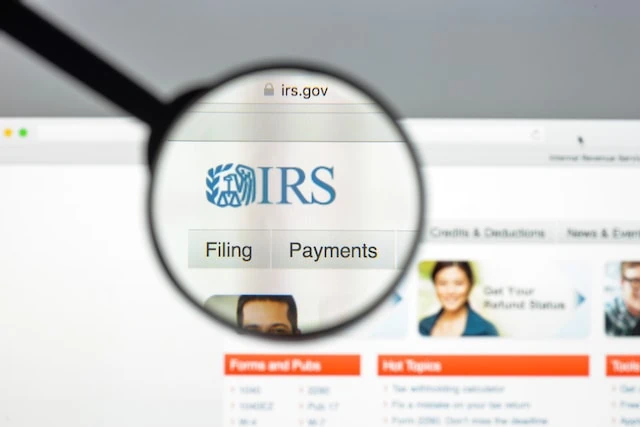
The IRS might excuse all or part of an RMD penalty if your failure to withdraw enough money from your retirement account was due to a “reasonable error” and you take “reasonable steps” to fix your mistake.
To request a waiver, file Form 5329 and attach a statement explaining your error and the steps you’re taking to withdraw the proper amount. The IRS will notify you if your request is denied and let you know how much you owe as a penalty.
Related: What Tax Bracket Are You In?
How to Give Your RMD to Charity

If you’re at least 70½ years old, you can take what’s called a qualified charitable distribution (QCD) from a traditional IRA and have that money go directly to charity. You can’t claim the charitable tax deduction for a QCD, but the amount donated isn’t considered taxable income (like other distributions from traditional IRAs). For 2024, a QCD can’t be for more than $105,000.
QCDs also count toward your RMD for the year. So, for example, if you must take a $5,000 RMD, you can instead take a $5,000 QCD and not have any taxable income from the transaction. Depending on your federal tax rate, this could save you a lot of money (the charitable tax deduction won’t reduce your tax bill by as much).
Related: Gift Tax Exclusion for 2024
RMDs When a Spouse Inherits a Retirement Account

If a spouse inherits a retirement account, there are several possible ways in which the RMD rules work for the inherited account.
A spouse who is the sole beneficiary of a retirement account can roll over the funds into his or her own IRA or otherwise elect to be treated as the original account owner. In this case, the start date and amount of RMDs are generally based on the surviving spouse’s age and life expectancy. This is often a good option if the surviving spouse is younger than the deceased spouse and wants to postpone RMDs.
If the surviving spouse isn’t treated as the account owner (i.e., treated as a beneficiary) and the deceased spouse died before RMDs were required, the surviving spouse can delay RMDs until the later of:
- The end of the year the deceased spouse would have turned 73
- The end of the year following the year the deceased spouse died
The amount of the RMDs are generally based on the surviving spouse’s life expectancy.
In addition, a spouse who inherits his or her deceased spouse’s retirement account and remains a beneficiary can elect to be treated as the original account owner for RMD purposes. This might be a good option if the surviving spouse is older than the deceased spouse.
Another option if the deceased spouse died before reaching the age at which RMDs are required is to elect the “10-year rule,” which means all the funds must be withdrawn from the inherited retirement account within 10 years.
If a surviving spouse remains as a beneficiary and the deceased spouse died after RMDs were required, the surviving spouse must start taking RMDs from the inherited account by the end of the year following the year the deceased spouse died. If the surviving spouse is younger than the deceased spouse, the amount of those RMDs are based on the survivor’s life expectancy. If the surviving spouse is older, RMDs are based on the deceased spouse’s remaining life expectancy had he or she survived.
YATI Tip: The RMD rules for inherited retirement accounts are extremely complicated. As a result, consulting with a qualified tax professional is highly recommended if you inherit someone else’s retirement account.
Related: 401(k) Contribution Limits for 2024
RMDs When Someone Else Inherits a Retirement Account

The RMD rules are different if a non-spouse inherits a retirement account. One set of rules applies if the person inheriting the account is an “eligible designated beneficiary,” while a different rule applies for all other non-spousal heirs.
An eligible designated beneficiary can be either:
- A minor child of the original account holder who died
- Disabled
- Chronically ill
- Not more than 10 years younger the original account holder who died
If the original account owner died before RMDs were required, an eligible designated beneficiary generally must base RMDs on their own life expectancy (although there are situations where the 10-year rule applies or can be elected).
If the original account owner died after RMDs were required, an eligible designated beneficiary generally must base RMD amounts on the longer of their own life expectancy or the original account holder’s remaining life expectancy.
If the person inheriting a retirement account is not the decedent’s spouse or an eligible designated beneficiary, the 10-year rule applies (i.e., all funds must be withdrawn from the account within 10 years).
Related:



